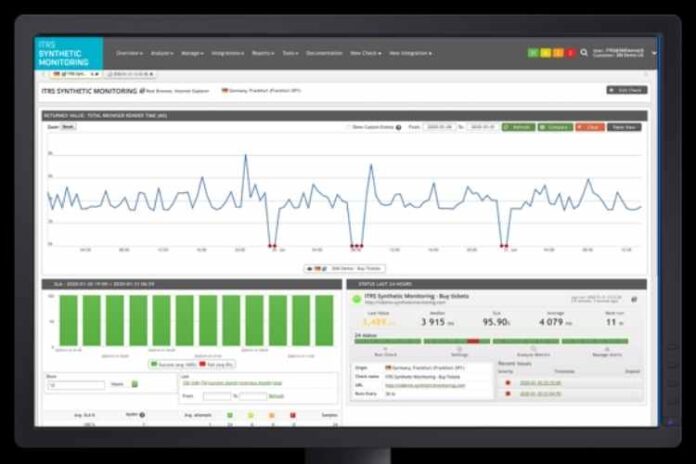The gap between an application’s real-time performance and its impact on user experience sometimes differs. That difference impacts user engagement. Therefore, monitoring this user experience is crucial for organizations to understand where optimizations are needed to improve user experience. Here is where RUM tools come into existence.
RUM, or ‘real user monitoring,’ is a technology allowing admins to understand how visitors or users interact with their website or application. Unlike typical analytical tools, RUM does not only provide insights on total page visits, conversion rates, demographics, etc. Instead, it provides a somewhat more profound understanding of technical specificity. Professional RUM companies have RUM tools with which organizations can quickly diagnose and eradicate problems affecting the UX.
How does RUM function?
The RUM technology functions by directly collecting information from the browser when users explore any site or application. The technology collects this information via JavaScript. It captures live sessions and also possesses the ability to replay them. Therefore, it gives organizations an understanding of how long or unresponsive the site or application malfunctions are actually. Organizations can quickly troubleshoot, track, identify, and fix user issues using RUM tools.
RUM technology in a nutshell –
- Provides the organization with complete visibility of how the software/site/application performs.
- Identifies and diagnoses whenever there is a front-end performance problem.
- Provides the organization with quantified measurements on how their optimizations have impacted user experience.
- Replays the visiting sessions of users and tracks anomalies.
- Provides the IT department of your organization with an idea of where to invest more.
The Top 3 Benefits of using RUM tools
1. Diagnosing Poor Front-end Performance
In production environments, RUM tools assist organizations in identifying and diagnosing the poor performance of applications. Poor performance might lead to a bad user experience. With the help of RUM tools, one can capture web performance metrics that provide insights into how users perceive a page’s loading time. Some RUM tools also have custom performance metrics to track and trace timings that specifically matter to your organization. The benefit of having these metrics is to help organizations identify poor front-end performance within a few clicks.
2. Tracing the Impact of Optimizations made
After tracking and diagnosing the performance problem, organizations work on making improvements. The improvements include making performance optimizations wherever needed. However, tracing and measuring their impact is equally important as making the optimizations. Only after measuring the impact will the organization understand where the trend lines have got to. Companies providing RUM tools effectively help organizations trace how their optimizations have worked in respect of end-user experience.
3. Understanding the Growth in User Experience
If you are looking for instance-level diagnostics, hire a real user monitoring (RUM) service provider. RUM tools quantify the software performance and quality to ensure organizations track effectively how the application performs at every stage of its usage. Understanding how impactful their optimizations have been is incomplete without knowing how the particular software flares.
The 6 Fundamental Steps of Data Collection using RUM tools
1. Data Capturing
The data is captured from page requests or objects hit by a browser or a server.
2. Data Sessionization
The captured data is then re-assembled into individual visits in different timestamps.
3. Issue Detection
The tools are designed to spot unique cases like errors, extended page load times, unresponsive or slow page responses, etc.
4. Developing Individual Visits
Individual visits are evaluated and developed either by depicting exactly what users experienced or by providing a summary of the report.
5. Report Segmentation
Based on the developed reports, they are now segmented after categorizing the availability and page/application performance across different browsers.
6. Alerting the Issue
The report upon development triggers an alert mechanism that leads to tracking the problem and fixing it.
Can RUM improve DNS performance?
Having the necessary data in hand, administrators can streamline information of DNS configurations to optimize the user experience. It gives a clearer idea of how the DNS configuration might be impacting page load times and the overall performance of the application. The rule of thumb is using the data procured in the DNS configurations to get maximum performance.
Is Synthetic Monitoring more powerful than RUM?
In general, there is no specific benefit that categorizes one to be more powerful than the other. Organizations having both real user and synthetic monitoring solutions will have more insights into their customers’ digital experience. The only difference between them is that RUM makes way for evaluating actual user data, compared to synthetic data of the latter.
Wrapping Up
Technology solutions are evolving rapidly in today’s increasing digital activity and mobility. To sustain in such a world, businesses need solutions like real user monitoring to track user experience continuously. They can hire companies providing these monitoring services and tools that facilitate the process. Therefore, running businesses won’t be a problem with a robust customer satisfaction level.






![MX Player Custom Codec [AC3, DTS, MLP, TrueHD, and more] MX Player Custom Codec](https://techmenza.com/wp-content/uploads/2021/10/MX-Player-Custom-Codec-100x70.jpg)


